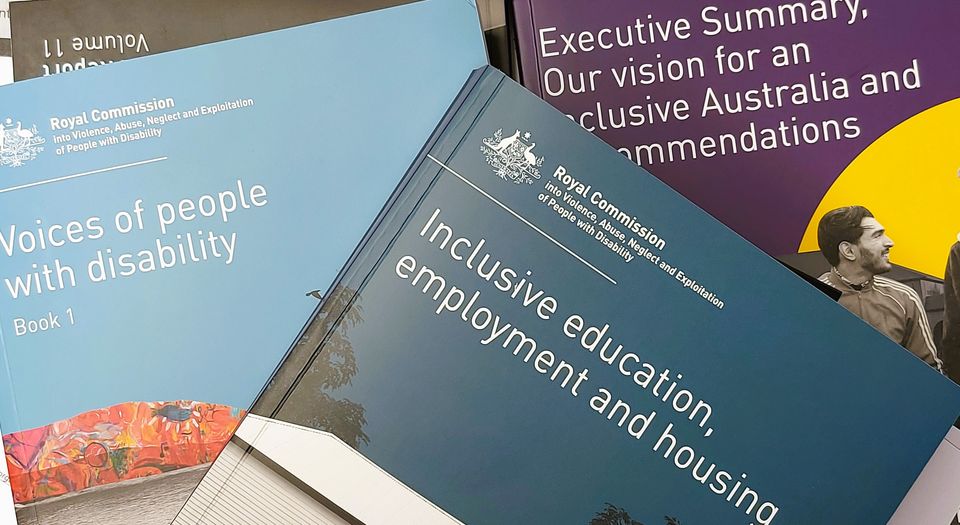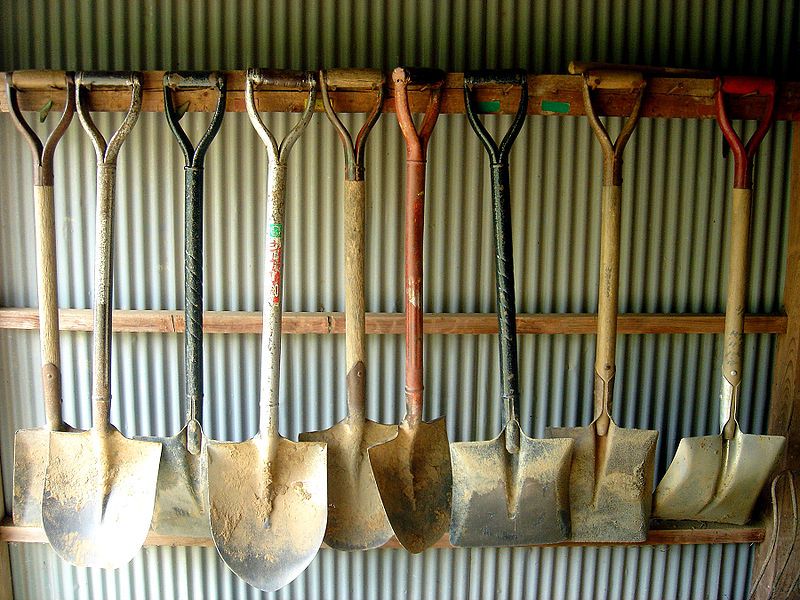A long way home

[Content note for violence, abuse and death]
The three largest books of the final report of the Disability Royal Commission all make up Volume 1, the voices of disabled people.
These heavy tomes are weighed down with the gravity of the stories, of the hope, of the horror, of the trust invested in this Commission. That by telling our stories, by raising our voices, there would be change, there would be an end to the violence so many inflict upon us.
And yet, as I start to wade through the full report, volume by volume, and think about what is written and recommended, the more I suspect that the DRC became an inquiry into us. Those disabled people. Over there. In the disabled place.
I hope I am wrong. I hope my reading as it goes on starts to put this picture together, through looking in detail at the pieces. Today, I’m starting at Volume 7 - Inclusive education, employment and housing - reading Section 8 and 9 on housing, including group homes and boarding houses.
Will the DRC make the key recommendation I’m looking for, to ask for the structural separation of housing and support? Will they deal with service capture, with the new market in exclusion and the links to rates of violence and abuse? Let’s see.
There is no index or bookmark or chapters for the stories in Volume 1, so I open the first book at random and start to read. The neighbour’s cat is visiting again, curled up at my feet in the backyard. Keeping me company in my grief.
Callan and Kelly’s story opens first, an all too familiar one. Callen lives in a variety of group homes, and is assaulted by a worker, neglected and abused. His family moves him, makes complaints and moves him again until they find somewhere where complaints are acted on. Not where the abuse doesn’t happen, just where something is done about it.
I open another page at random. Here Carrie, a support worker, tells the story of Bill, a disabled person who lives in a ‘share house’, or more accurately, a group home. He went to a day program and arrived hurt and dirty. Bill broke his leg and made do with a broken wheelchair while he waited for a new NDIS package. He died two days before his NDIS meeting, in hospital from ‘an infection in the wounds on his elbows’.
Every page is another story, another pouring out of words from disabled people, their families, supporters, advocates and more. More abuse, more neglect, more violence, more exploitation, committed by workers, by strangers, by family, by friends, by police, by healthcare workers, by teachers, by other disabled people. There is so much, everywhere, in every place.
The little cat butts their head against my legs, demanding that I put down the heavy book and pat them. I pause for a moment and acquiesce to their instructions. The cat’s mottled coat is fluffy and soft, warm from the sun. Satisfied, they returns to hunting in the overgrown weeds, and I pick up Volume 7.
Section 8 - Inclusive Home and Living
The section starts with our right to housing through the Convention on the Rights of Persons with Disabilities and moves into a basic analysis of where disabled people are in the housing and homelessness policy infrastructure. Hint, not included.
This part also looks at NDIS provision of housing and support, specifically specialist disability accommodation (SDA) and supported independent living (SIL). SDA pays for housing, and SIL is for support.
The initial part of this section is built on publicly accessible information but includes some clangers like ‘participants are able to choose their SIL provider once the funding has been included in their NDIS plan’. Yikes and nope. They also quote the 2019 review of SIL which recommended that housing and support are separated ‘where practicable’. Hmm. They noted that they ‘heard’ that combining housing and support in a single provider does happen. Yes, you bloody did.
The DRC notes the emergence of unregistered providers also renting homes and saying they provide intensive support through SIL with little to no oversight. This is something the recent Four Corners program also reported on.
The overarching policy frameworks for both housing and homelessness are examined, and you guessed it, we don’t exist there. Despite disabled people being more poor and more likely to be homeless, we aren’t a priority group. Homelessness also isn’t a priority in Australia’s Disability Strategy. Great.
The section also looks at the inaccessibility of much of the housing infrastructure, and again, lists publicly available information. There is a lot of discussion about WHAT the problems with housing are, with no examination of WHY or even about the direct links with rates of violence and abuse against disabled people. Again the inquiry seems to be into us, rather than to what is happening to us and why.
Insecure tenancy, and the total lack of even basic tenancy rights for folks who live in boarding houses and group homes, get some discussion, but again, the recommendations aren’t exactly strong.
The part on boarding houses, also known as supported residential services (SRS) or hostels in some states, is infuriating and wildly inadequate. The DRC public hearing on SRSs heard of profound neglect and abuse of very disadvantaged disabled people. The thousands of disabled people who live there need homes, need safety, need a whole lot more than the exploitation they are subjected to by operators of these places.
So what does the DRC recommend? Better record keeping, more standards, monitoring and ‘incident management’. I keep seeing the horror of the pictures shown in the public hearing - the difference between the scale of the abuse and the recommendations is stark.
Despite hearing significant evidence of the failure of standards and compliance regimes, the DRC recommends more of the same, with the added bonus of leaning on an overburdened and underfunded advocacy sector who are shut out of these places.
Where are the recommendations to shut these places down, to build new homes, to ensure disabled people have a say about where they live? Not driven into these hovels due to poverty and disability.
Section 9 - the future of group homes
The media coverage of this section has focused on a so-called split between Commissioners, but closer reading finds that all except the Chair, recommended an end to group homes, with Ryan differing on the timeline. And even the Chair accepts that the status quo isn’t ok.
This section covers the litany of evidence about why they should end as a form of housing, including that abuse happens ‘almost as part of the every day-to-day practices in these environments.’ Let that horrifying thought sink in - abuse is baked into the daily ordinary of these places.
As I said earlier, the concentration of both housing and support with a single service provider was heard time and again in public hearings, with disabled people being threatened with homelessness if they raised concerns about being hurt or wanted change to their support.
There is an acknowledgement of this link, but it refers back to Section 8, which also then refers back to Volume 10, which refers back to Volume 11 and nowhere in any of this circular referral pathway is there a recommendation to separate housing from support. Running around the volumes of reports trying to find action to stop one of the biggest risks to abuse and exploitation seems to sum up my frustrations with this section very well.
The institutional nature of group homes is covered, as is much of the evidence heard in the public hearings. The recent Own Motion inquiry from the Quality and Safeguards Commission is also examined, but there is no new information here, no investigation, no use of those Royal Commission powers.
Eventually, there is mention of the Action Plan create in response to the Own Motion inquiry, and a recommendation to add to Action 8 ‘a specific review of mechanisms to transition away from allowing the same providers to provider SIL and SDA, with interim arrangements to strengthen oversight to address and monitor conflicts of interest’.
There is no timeline, there is no consequences for not doing this, there is no enforcement, there is nothing. Just a maybe, and a might, and a review in an action plan. Again, the gulf between the stories of what is happening in group homes, and the suggested recommendations is wide.
The DRC even acknowledges that the gap between existing actions and the issues for disabled people is big, saying about the NDIA’s home and living demonstration projects that the current level of investment ‘does not reflect the degree of change needed or its urgency’. And yet, when given evidence that often people with an intellectual disability are only offered group styles of housing, the report says ‘consideration should be given to the NDIA using flexible home and living line items that guarantee a level of funding without prescribing a specific model of support.’ You think?
There is a welcome recommendation to end the conflicts of interest with support coordination, saying it must be independent from housing and support. So why not a stronger recommendation about housing and support separation than a review?
I open Book 1 of Volume 1 again at random, and the story of Artemis spills out, told by her mother. Artemis lived in a group home, hurt over and over. Her mother took food there when it was obvious she wasn’t getting enough to eat. Artemis died in hospital, after being found in a room full of blood. She had bruises all over. Her mother told the DRC that ‘these people, the one who was doing this to my daughter, are doing it to other kids too.’
Every story is like this. Every story is a plea for urgent change, for these words to matter, for disabled people to matter.
There are many more volumes to read, many more recommendations to absorb. But this part of Volume 7 is disappointing and profoundly inadequate for the scale of violence and abuse happening to disabled people who live and die in these places. Let’s hope the rest isn’t like this.
